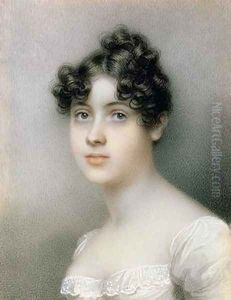Mary Ann Knight Paintings
Mary Ann Knight, born in 1776, was an English miniaturist known for her detailed and delicate portrait miniatures. She was born into a family that was well-acquainted with the arts; her father, James Knight, was a respected London fruit broker who appreciated the fine arts and her mother was keen on educating both Mary Ann and her sister on literature and languages. Despite the limited opportunities for women in the arts during the 18th and early 19th centuries, Knight managed to develop her skills and gain recognition for her work.
Knight's artistic education began under the tutelage of her uncle, Samuel Redgrave, and she further honed her craft by studying under the famous miniaturist John Smart, a leading artist in the field. Her talent quickly became evident, and she started exhibiting her works at the Royal Academy of Arts from 1807 onwards. Knight's miniatures were known for their exquisite detail, capturing the nuanced expressions and character of her subjects. She worked primarily in watercolors on ivory and was adept at portraying the textures of fabrics and the translucency of skin, which made her miniatures highly sought after by the aristocracy and social elite.
Throughout her career, Mary Ann Knight established herself as one of the preeminent female miniaturists of her time. Her work was characterized by a high level of technical skill and a sensitive approach to her subjects. Unlike many of her contemporaries, she managed to sustain a successful career as an artist despite the challenges faced by women in the art world during that period. Mary Ann Knight continued to paint up until her death in 1851. Her legacy is a testament to her skill and the role of women artists in the history of British miniature painting.
